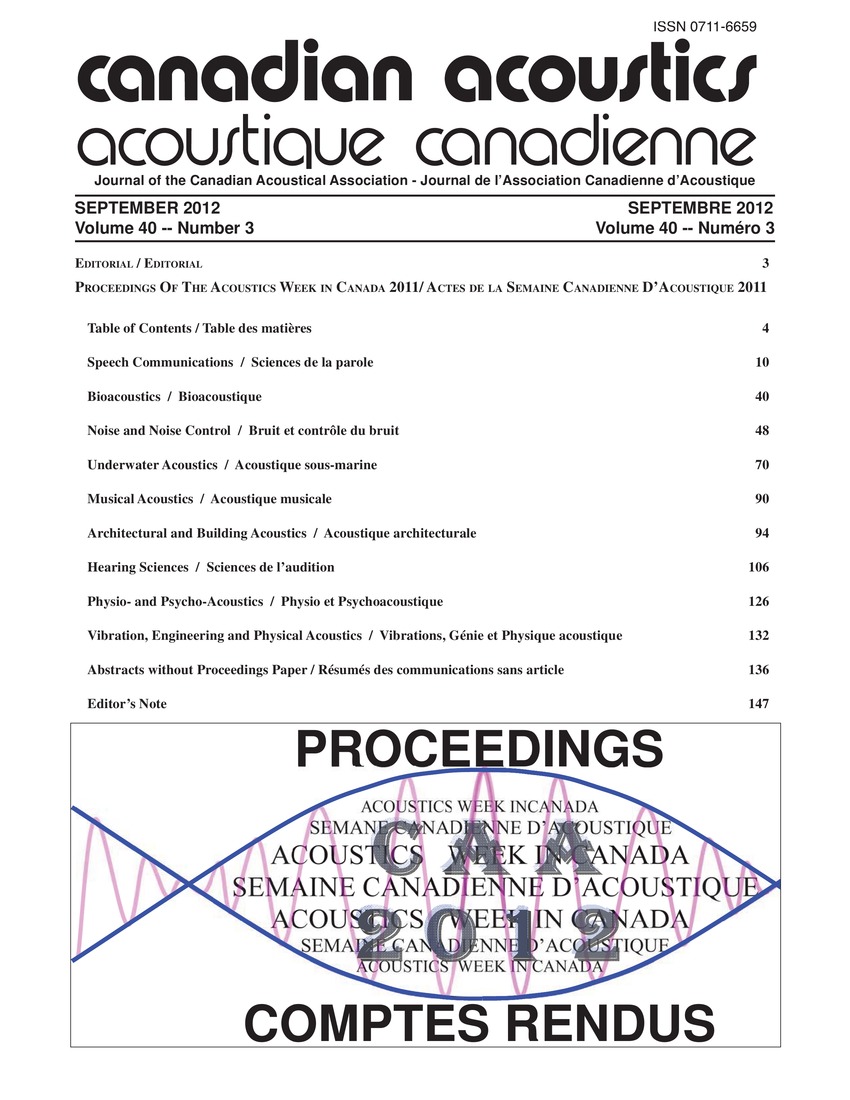Hearing loss in classical orchestra musicians
Keywords:
Noise pollution, Surveys, Hearing loss, High frequency, Noise dosimeter, Noise exposure, Speaker systemsAbstract
Quian et al. performed a noise exposure survey on members of the National Ballet orchestra, using noise dosimeters. A questionnaire was also conducted to gather information on particulars of the surveyed members. Air conducted and bone conducted audiograms were obtained using a clinical audiometer with 5 dB steps. Forty-four of the 52 musicians completed the questionnaire (85%). The majority of respondents reported listening to music through a speaker system (40), while many will also use earbuds with portable listening systems (21). On average the data suggest only a slight to mild mid to high frequency sensory-neural hearing loss in the 4000-6000 Hz region. This is consistent with hearing losses observed in the earlier stages of other forms of noise exposure. for. It is also observed that there are practically no differences between measured and calculated hearing losses at 3000, 4000, and 8000 Hz.Additional Files
Published
How to Cite
Issue
Section
License
Author Licensing Addendum
This Licensing Addendum ("Addendum") is entered into between the undersigned Author(s) and Canadian Acoustics journal published by the Canadian Acoustical Association (hereinafter referred to as the "Publisher"). The Author(s) and the Publisher agree as follows:
-
Retained Rights: The Author(s) retain(s) the following rights:
- The right to reproduce, distribute, and publicly display the Work on the Author's personal website or the website of the Author's institution.
- The right to use the Work in the Author's teaching activities and presentations.
- The right to include the Work in a compilation for the Author's personal use, not for sale.
-
Grant of License: The Author(s) grant(s) to the Publisher a worldwide exclusive license to publish, reproduce, distribute, and display the Work in Canadian Acoustics and any other formats and media deemed appropriate by the Publisher.
-
Attribution: The Publisher agrees to include proper attribution to the Author(s) in all publications and reproductions of the Work.
-
No Conflict: This Addendum is intended to be in harmony with, and not in conflict with, the terms and conditions of the original agreement entered into between the Author(s) and the Publisher.
-
Copyright Clause: Copyright on articles is held by the Author(s). The corresponding Author has the right to grant on behalf of all Authors and does grant on behalf of all Authors, a worldwide exclusive license to the Publisher and its licensees in perpetuity, in all forms, formats, and media (whether known now or created in the future), including but not limited to the rights to publish, reproduce, distribute, display, store, translate, create adaptations, reprints, include within collections, and create summaries, extracts, and/or abstracts of the Contribution.


